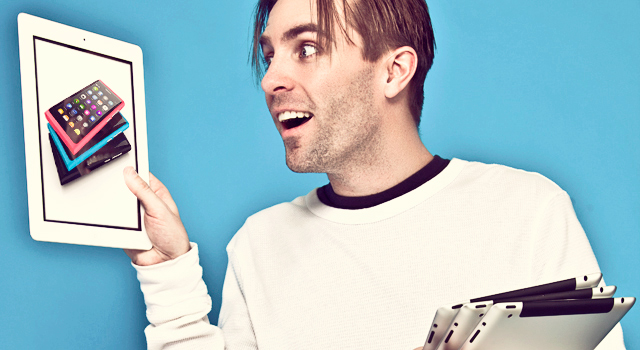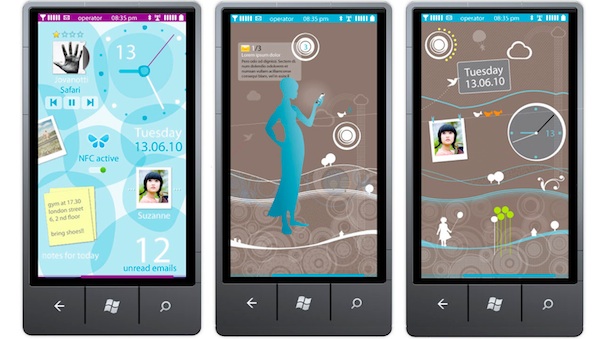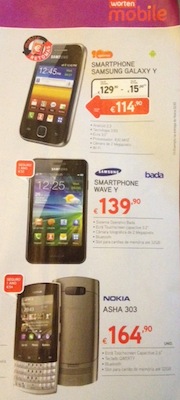Trying to Activate Iphone and Keeps Going Back to Activate Iphone

Nokia has big plans to come back from the brink.
Chances are if you were speaking on a mobile phone in most countries around the world (except the U.S.) six or seven years ago, you were clasping in your hand a little multi-colored, keypad-bedecked bundle of plastic and electronics made by Nokia. Your idle minutes were spent playing Snake on its gray display. But nowadays you're much more likely to be gabbing–and surfing the web, updating Twitter, or playing a sophisticated game–on a touchscreen smartphone built by a handful of other makers.
Nokia, you see, is perhaps the one company that's been dealt the biggest slap across the face by Apple's disruptive iPhone. It was slow to embrace touchscreen tech, slow to let go of its antiquated user interface, reluctant to innovate its smartphone lineup–and subsequently had to shelve its long-held business model, and embrace Microsoft's clever smartphone OS.
It's planning a comeback. A big one. But success is far from assured.
The iPhone Killer
Nokia's chief of design recently remarked that his company was busy planning a future phone UI that would be so revolutionary it would surpass the current smartphone tech by miles. Marko Ahtisaari concentrated his disdain on the user experience on current Android and, curiously because it's a Nokia staple, Symbian. According to Ahtisaari, the current smartphone UI is a dead thing, a toy, a "dollshouse" in fact, where users can merely adjust the "furniture" of the UI.
As for the iPhone, Ahtisaari extended the metaphor by saying "the road from the kitchen to the dining room is always through the front door," and slammed the iPhone as being "poorly designed" and overly complex. Ahtisaari is criticizing the iPhone's simlpicity and its homescreen-centric UI, and in a way he's right–Apple hasn't tweaked the overall way iOS works in years. But it's these simple features which hundreds of millions of buyers seem to like, when they arrived they were far beyond anything Nokia was capable of offering, and Ahtisaari is conveniently overlooking some of the advances Apple introduced in iOS which lets you quickly switch between apps without going to the homepage.
Ahtisaari is more behind the dynamic "live" feel of Windows Phone, he says, which is a more natural way for a user to interact with their phone. Arguably he has a point here too, because you can get meaningful data about a slew of apps from a quick glance at a Windows Phone versus alternatives from Apple or Google. But Microsoft's Metro UI is still a limited system–you can't bend it to your design whim as a handset vendor, and the look and feel is defined by Microsoft (a firm not famous for moving swiftly through evolutionary steps).
Hence Ahtisaari's long-pursued work to develop something better still. Something that users won't even have to bend down to their phones to interact with, or even to touch them.
Which of course has us speculating: Is Ahtisaari talking about the kind of dynamic device UI that Microsoft itself has championed in several "visions of the future"-style efforts, like the video below? It's possible. Or is he talking about a radical new interface that'll rest on voice control, or perhaps incorporate a head-up display–and won't run software from MS but from Nokia itself? Microsoft is certainly looking at this sort of future, as are Google and even Apple.
It's fascinating to see the head of design at Nokia wriggle against the user experience imposed on his customers' phones via Microsoft and suggest that perhaps there's a better way coming soon. One very appealing hint at the sort of thing that's possible comes via this leak of conceptual UIs coming from a Nokia designer, who has now departed Nokia–perhaps sadly:

If Nokia did pursue something radical like this, of course, it really better had arrive soon–like in 2013. That's because Apple is carefully iterating iOS all the time, and may even be doing so more swiflty in the post-Steve Jobs era. It's totally plausible that Apple will radically overhaul iOS sometime soon. Meanwhile Google is innovating Android all the time (even if adoption rates aren't the best) and its handset partners are trying clever overlays with Samsung's TouchWiz as a good example. If Nokia wants to beat its better-selling peers, then it better reveal its black swan fast, lest its relevance will be just too late.

Cheap Smartphones
The other string to Nokia's bow is cheap phones–something it's always been good at and which, thanks to the spending habits of the developing world, has driven Nokia's bottom line for years. Pile 'em high and sell 'em cheap is always a vendor option because it does work. But it won't work forever, and the dumbphones Nokia relies on are becoming passé–even in the developing world, where moves to embrace novel tech like mobile payments can sometimes outpace countries like the U.S. Hence Nokia's effort to appeal to nations like India with its new Asha 303 smartphone, freshly unveiled.
But the Asha has a problem. As a flyer from my local phone store shows, the Asha (at least in Portugal) is facing up to a double-threat of smartphones that are both new, cheaper, and better, and older smartphones that are now discounted–and whose tech may still surpass Asha's. Samsung is the chief culprit, of course, with its spam-like wide range of Android Galaxy phones available at all prices, and its own-brand Bada OS phones. Nokia may be trading on its status as a household name, but our suspicion is that if it really is to take the cheap smartphone market by storm, it has to try much harder than the somewhat uninspiring 303.
The Inevitable Tablet
Marko Ahtisaari was also in the press the other day for revealing something that's news, but really highly expected. Nokia is hard at work on a tablet PC. So hard that Ahtisaari is spending a third of his work time on it, and we can expect this means the firm is throwing many design euros at the device in an effort to make it as appealing to behold as the N9 is, and thus make it stand out in the incredibly iPad-esque tablet market. Of course the firm will also be spending money on its technical aspects, and we could expect odd stand-out features to arrive–like Nokia's recently flirtation with high-spec camera tech.
CEO Stephen Elop has commented on the market before, saying Nokia was paying attention and was certain the only way to make a splash was to distinguish one's product radically from its peers–particularly the iPad–but he wouldn't make any firm statements.
We can guess that Nokia will be among the first firms to release a Windows 8 tablet device later in the year, however. That's because now Nokia and Microsoft are working so closely together, the Nokia tablet could represent the best synergy between hardware and software for a Windows 8 device–a strategy that's propelled Apple to record-setting success, even while its Android competitors fragment.
Nokia stands a chance here if its device is technologically powerful, remarkably well designed and distinctive, and is priced at the right level (something it's not quite, perhaps, managed with its Windows phones yet).
Odd Futures
And then there's Nokia's R&D division to remember, a body that used to eat up fantastical amounts of Nokia's cash but didn't let it outmaneuver the leaner-spending Apple. Ahtisaari hinted at some of this division's work with his mention of the iPhone-killer's radical user interface.
And we can see still more hints of it with recent patents like Nokia's magnetic tattoos. In the minds of Nokia inventors a near-future smartphone interface will connect to a skin sensor that's actually embedded into the user's body–using ferromagnetic ink as a tattoo. When your phone wants to alert you, it'll emit a signal that activates the tattoo and thus generate a tactile response in your skin.
Is your skin crawling at the idea? It's a little odd, but only because it seems so extreme to us. But it does indicate Nokia's not letting its future slip away from it. Innovations may yet come from Nokia's stable to upset the world of mobile comms.
Trying to Activate Iphone and Keeps Going Back to Activate Iphone
Source: https://www.fastcompany.com/1825660/can-nokia-beat-iphone-and-ipad-dont-laugh-its-trying
0 Response to "Trying to Activate Iphone and Keeps Going Back to Activate Iphone"
Post a Comment